The Oregon Department of Transportation has just released the Barbur Boulevard Safety Audit (PDF). The 115-page report takes an in-depth look at the safety issues of one the most deadly and dangerous urban highways in our region and it has been eagerly anticipated by advocates for months.
The audit came about after ODOT received significant pressure from the community (including a petition from the Bicycle Transportation Alliance) to do something about street’s dangerous bicycling conditions.
While the audit addresses many issues, the one that has generated most of the attention and controversy (and led to the audit in the first place) is the lack of a dedicated place to ride a bike across the Vermont and Newbury Bridges. Currently those bridges force road users into a pinch-point right at the location where ODOT’s own data shows has the highest speeds in the study area.
ODOT spent about five months on the project and had nine “independent” engineers from the public and private sector on the official Road Safety Audit team. That team spent 3-4 days in the field to observe how a 4.3 mile corridor of Barbur — from Naito Parkway to Capitol Hwy — is used by all modes. They biked, walked, and drove at all hours of the day.
Here’s the audit team roster:
The resulting report lists eight general safety issues, nineteen location-specific safety issues. The RSA team offers recommendations on how to address those issues in the short, near, and long-term. There are no cost estimates and the engineers did not go into detail about the technical feasibility of the various suggestions. Nor did they law out any timeline for completion. In a cover letter from the RSA Team leaders to Region 1 Manager Rian Windsheimer, says the report was intended to identify issues and “help the region plan.”
Why was an audit needed on Barbur? Here’s a snip from the report summarizing the toll it takes on our community:
Over the ten-year study period, 919 crashes were reported on Barbur Boulevard, including 873 vehicle related, 34 bicycle related, and 12 pedestrians. Ten fatalities were reported, eight of which involved alcohol.
The audit split up safety issues into three categories: I, II, and III, with III being the most severe. Speed and bicycle facilities were identified as two of the Category III issues.
On the issue of bicycle facilities, the audit provides a treasure trove of crash data. There have been 34 reported crashes involving people on bicycles in the past ten years. The majority of those crashes (26 of 34) happened because someone did not yield the right-of-way.
The chart below shows all the bicycle-involved crashes by location:
Here are the bicycle safety issues identified in the audit:
And here’s the audit’s breakdown near, short, and long-term suggestions to improve bicycling safety in general:
Near-term suggestions:
Provide clear direction for drivers and bicyclists through pavement markings at conflict areas, including:—At select locations, carrying bicycle lane markings through accesses/driveway area.
— Shortening skipped bicycle striping at transition/conflict areas to minimize weaving-section across bicycle lane.Intermediate suggestions:
Provide clear direction for drivers and bicyclists through pavement markings at conflict areas, including:
— Using green pavement marking at intersections and driveways with high volumes of right-turns.
— Eliminating on-street parking where possible.
— Extending skipped bicycle striping through wide intersections to guide bicyclists and bring attention to bicycles on the roadwayProvide consistent bicycle facilities by:
— Restriping the roadway to narrow travel lanes where possible (consistent with suggested corridor cross-section, see previous “Speed and Cross-section Inconsistency” section), including buffered bike lane.
Long-term suggestions to address bicycle facilities:
Create shared pedestrian and bicycle space where width is limited.Where there is insufficient roadway width, either widen the highway cross-section or provide alternative location to provide bicycle facilities.
The audit also has a section on pavement quality of bike lanes, which it identifies as a Category I safety issue.
As for the Vermont and Newbury Bridges, how best to provide “defined bicycle facilities” on them was the one issue in the entire report the audit team did not reach consensus on. They did however agree that the best option would be to replace and widen the existing structures.
Beyond a complete replacement of the bridges, the audit shares some suggestions on what can be done interim to make things safer.
In the near-term, the audit recommends two things: “adding pavement symbols indicating the loops that actuate the warning lights on the bridges so bicyclists are aware of where they need to ride”; and, “Consider signage or striping to encourage bicyclists to take the outside travel lane across the bridges.”
Advertisement
The audit also offers seven different options for how to manage the existing bridges; but they’re careful to underscore that they believe none of them are ideal:
“There is not a preferred option within the available existing cross section. The team suggests further evaluation of the trade-offs associated with these options and how they compare to the evolving vision for this corridor.”
One of the options they explore is to do the road diet and re-allocate space so that the existing cross-section over the bridges has three standard lanes and a bicycle-only lane instead of four standard lanes and no space for bicycling. This is the design the BTA and other advocates are pushing for. PBOT studied this design and found it would cut speeds significantly and result in only minimal delays to users during peak times.
Here’s the sample cross-section:
And here are the “cons” with this option noted by the audit team:
— The ability to implement incident management (ICM) is limited with a single northbound travel lane, because northbound I-5 traffic may be redirected to the I-5 Terwilliger exit to bypass an incident to the north on I-5.
— Potential safety implications associated with the transition area at the two-to-one lane merge and the potential impact it may have on upstream signals.
— Increased congestion for northbound traffic anticipated, with impacts to upstream signals (SW Miles Street, SW Terwilliger Boulevard, SW Bertha Boulevard), which may result in increased rear-end crashes.
— Although Barbur Boulevard serves directional peak traffic (AM northbound into town and PM southbound out of town), there is a northbound PM peak in addition to the AM peak because of congestion on I-5 – motorists use Barbur Boulevard as an alternate to access the Ross Island Bridge). Therefore, this option has impacts during both the AM and PM peak periods.
There’s a lot to digest in this audit. Will it help increase urgency on ODOT to make Barbur safer for cycling? That depends on how it’s used by our electeds, agency leaders, and advocates. From ODOT’s perspective, they say the recommendations will be “taken into account” as funding becomes available and as they plan future projects. They also include this friendly reminder in the report: “Safety issues cannot be completely addressed through engineering alone.”
Stay tuned as we continue to cover Barbur Blvd.
Download the full report here.
— Jonathan Maus
jonathan@bikeportland.org
(503) 706-8804
@BikePortland


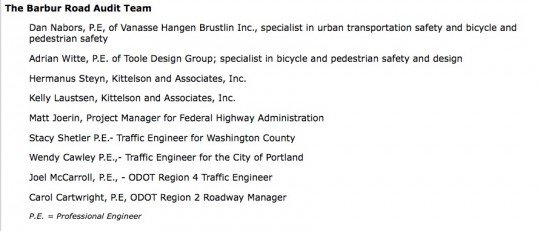
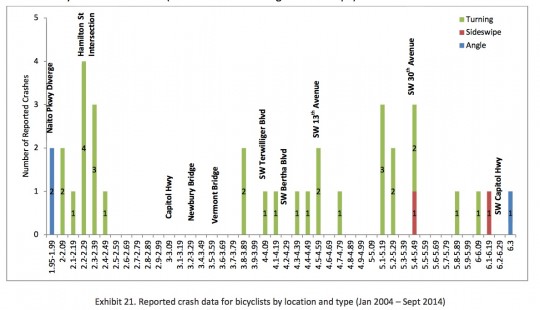

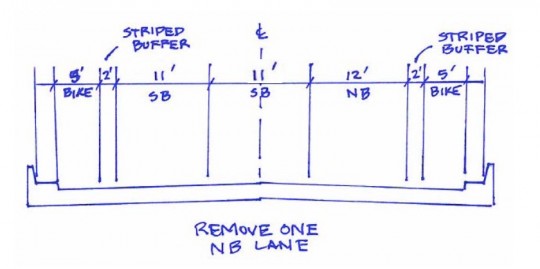
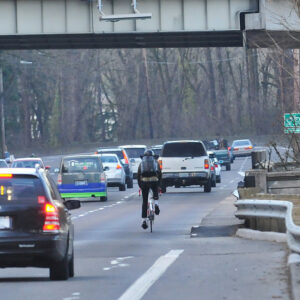
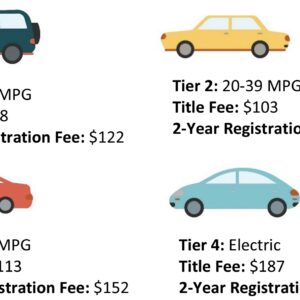
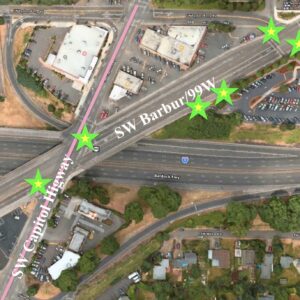
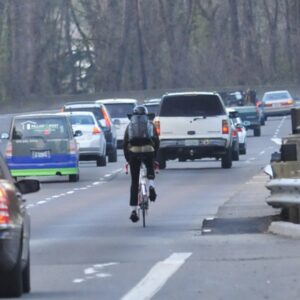
What we need on Barbur are fully separated and protected bike lanes, not more green paint. Why is this solution not even considered in the report?
Dream on, that is not going to happen anytime soon. I commute on Barbur every day. It is the safest part of my ride from NE to near Wa. SQ.
There are no crossings to speak of, you can ride as fast as you want, you are not “interacting” with cars.
Riding on neighborhood streets in the rest on the city is far more dangerous….
Not with that attitude.
I commuted on Barbur every day for a year. SE Portland to Kruse Way area. I agree — it was the part of my commute where I felt safest. A million miles better than riding in the city. Not so say it can’t be improved, but I enjoyed it.
I wonder if the safety arguement is just not going to ever convince ODOT to make changes for bikes. It is relatively safe because so few people ride on it compared to it’s potential. Barbur has the highest percentage of men who ride on it of any major street in Portland. I would also say it has one of the highest percentages of the “strong and fearless” riders.
Maybe the question should be how do we get that level more equitable and in general how do we get more people to ditch their car and ride a bike down Barbur.
This++
I commuted up/down Barbur for more than ten years. Including sometimes by car. It is OK for the strong/fearless contingent (although hardly my favorite route). Fast and direct.
But riding it with less bullheaded riders relives the nerve wracking experience of doing so the first time myself. On one occasion a good friend — and strong rider — broke down crying after we took the Vermont bridge.
And no way no how am I gonna bring my kids on it.
It is the gentlest grade and most direct route from inner Portland to the westside, including suburbs.
The disconnect is between how great it could be (world-class bike highway & linear park) and what it is (underutilized, overbuilt auto highway — directly parallel to a freeway).
We are getting positive vibes from ODOT about protected bike lanes on outer Powell Blvd for the portion funded with $20 million, so anything is in fact possible.
However, there are two main downsides of protected bike lanes: After you have exited the facility, you have to be hyper-vigilant at intersections (hence the high-crash data between bikes and cars), and you have to deal with yoyos who are using the protected bike lane as a “sidepath” and insist in riding against traffic, often without lights and wearing dark clothing, riding chop-shop specials.
34 bicycle/car collisions in 10 years is hardly a high incident rate. Roughly 20% (ie 6) of those incidents occur at the Hamilton intersection – not on the bridges. Sure it isn’t a Willamette bridge access bike route, but bicycle traffic is decent – I suspect it’s better than some of the mid east side greenways because though I don’t get over there often – when I have I’m usually impressed with the amount of bicycle traffic on Barber.
I’m not saying it doesn’t deserve a path and a more comfortable environment for more timid bike riders, such improvements would definitely increase bicycle traffic along Barber which would be great. But I don’t think stressing the safety aspect will work – since the cold data isn’t showing it as being that dangerous. There are lots of single intersection in town that have more bicycle automobile conflicts than 3 or 4 a year and they remain popular and they don’t get the attention this 5 mile stretch of road gets.
“919 crashes were reported on Barbur Boulevard, including 873 vehicle related, 34 bicycle related, and 12 pedestrians. Ten fatalities were reported, eight of which involved alcohol.”
Ten fatalities in ten years on a single stretch of road in Portland *is* a high incident rate.
Because we’ve designed this road and our traffic system to prioritize speed above life, there are ten families without their loved ones, ten communities without their friends and lovers and brothers and sisters and mothers and daughters and sons.
This is the perfect opportunity to have a road safety project that improves safety for *everyone*, while also making a place more friendly for people who walk and bike.
It’s a perfect place to demonstrate we can retain our community connections while saving lives.
8 of the 10 fatalities were alcohol related. This has nothing to do with the road design.
Crashes have multiple contributing factors.
Looking at the national NHTSA data, speed is a factor in more crashes than impairment overall. I haven’t dug through the Barbur report to see the data on the ten fatalities to see which are speeding+alcohol and which are just alcohol.
Said another way, an impaired driver on a street designed like Barbur is more likely to go faster than if s/he is on a street designed like a neighborhood street.
Though I agree road design won’t solve all the problems.
I hope this leads to a safer Barbur. There certainly have been enough meetings and reports about Barbur to give any motivated politician cover to do a road diet. Barbur will not be safe for people on bikes until those bridges have bike facilities.
Love to see a report documenting blood pressure increase biking over those bridges. Waiting for a bigger bridge is not a plan.
Do you ride on Barbur? The bridges are very quick and there is hardly any traffic. I cross them each way each day and hardly ever have a car on the bridges with me.
The transition form Barbur to Naitto sucks, that area definitely needs some work but Barbur is fine. I cannot remember a case where a cyclist was hit from behind in the bike lane. I don’t think a lot of people who comment on riding on Barbur actually do?
Do you ride southbound during PM rush hour? There is a constant stream of cars and busses in both lanes. The bridges are incredibly stressful during peak hours.
I ride Barbur almost exclusively on my way from Lloyd Center to Washington Square (sometimes I ride up around OHSU). I ride on Barbur NB at 7:30am and SB between 5 and 6. Been this way since 2010.
In these 5 years, maybe 2 or 3 times I felt stress on the bridges and that was caused by multiple busses. The recent re-pave was a great improvement, though those little dips that extend from the curb into the lane kida suck.
I feel far less stress than I do riding along the waterfront or making my way thru downtown to get up and out to Barbur. In fact, downtown and the waterfront are the worst parts of my bike commute. Once on Barbur to Multnomah to Olesen to Hall Rd, it’s a breeze. Well, Hall Rd iver 217 is a little stressful.
I felt the complete opposite on my commute in the past from Lewis & Clark College to downtown — as soon as I crossed 405, I knew I had survived another day.
Maybe some of these comments point to a difference in riding styles? For me, speed is almost always top of my list for stressors while riding. Highway 30, for example, may *technically* be safe, but I go out of my way (through NE or on the other side over skyline) to avoid riding on it. I hate it, I hate the feeling of fast cars, the sound of them, etc.
Whereas once I’m in downtown, I largely know what to expect. I can take the lane, or use whatever limited infrastructure we have in town, and I feel far more visible. Sure, people will continue to drive erratically, but they are far less likely to kill me in their car, since we’re all kinda going slow.
All that’s to say — I don’t think the concerns over safety on Barbur are in any way being overstated. They are real, and they absolutely do keep more people from riding. Considering how many people are out that way in SW, we all deserve so much better.
Barbur seems likely to have fast traveling motor vehicle traffic for a long time to come, and lots of it. Even more than now, as area population continues to grow. Except for people that apparently like riding in this kind of traffic environment, that leaves Barbur continuing to be a bad road to ride, whether or not the bike lanes eventually are made continuous across the bridges.
How many more people may feel inclined to ride Barbur if the bike lanes were made continuous across the bridges is entirely speculative.
I’ll guess that a wider than average bike lane, say 8′ and distanced 5′-6′ away from Barbur’s main lanes of traffic, might draw some significant additional numbers of people riding for recreation…but for commuting, I kind of doubt there would be much of an increase.
Logical reasoning suggests that people that are going to bike commute in that general area, already ride the route. If they’re really bothered by the constriction at the bridges, they’ll slow down and get up on the sidewalks to cross. On the downhill, if they’re up for a fast ride, they’ll wind up the pedals and go with traffic fast in the main lanes. Riding this section of Barbur’s downhills at 30-35 is manageable.
Preference for riding in Barbur’s type of road environment that’s noisy and stressful by way of the sheer volume and speed of motor vehicles in use on the road, I suppose, varies by individual. Definitely not my own preference, though I have ridden it numerous times. Stopped doing so because I thought ‘What’s the point? …to be riding this type of environment is not why I’m riding. For the very limited pleasure to be had riding this road, may as well be driving.’.
Isn’t it illegal to ride your bike on sidewalks in Portland? This causes riders to have to ride with traffic over the bridges. It seems the sidewalks could be leveled to continue the bike lane over the bridges for a simple, timely fix for now, since pedestrians have to walk in the bike lane on either side of the bridges.
The sidewalk ordinance is limited to the downtown core.
The “might as well be driving” thought is probably shared by many who might ride this route given a more separated lane. We don’t have any options to avoid the noisy, dusty, speeding traffic except for a less direct or less flat route. With a tiny, cheap 250W hub motor and 24V battery, I can maintain at least 12mph southbound without getting winded on this uphill grade. In SW, the other choices are Corbett or Terwilliger, which aren’t particularly safer or more pleasant, but feature a couple hundred feet of extra climbing.
ODOT Knows
There’s a reason I don’t ride on Barbur.
Nice try, ODOT employee.
Interesting that the bridges have no crashes as does the ramp up to BHH. I would have guessed there were more issues there given my own experience riding and comments by others.
Perhaps most cyclists are extra careful at the bridges, slowing down or stopping to wait for a traffic lull before crossing (same when crossing at Capitol). I know I am scared s**tless when I’m riding Barbur in the evening or at night around the bridges, but then I’m not a regular user.
In all my 5 years riding with on Barbur and crossing the bridges I have never seen someone stop to wait for a lull in traffic. I have seen some people go up onto the little narrow walkway going SB and have even done that once (and only once).
There have been very few times where a car has come real close to me while on the bridges. Generally, they move over in the outer lane (it is an extra wide lane after all) or they move into the inner lane to go by. Since the install of the electronic speed sign south of the bridges, my sense is that speeds have somewhat slowed.
I do have to acknowledge, though, that the one real dangerous part on Barbur is that pedestrian crosswalk/bus stop just south of downtown. Busses pulling in and out there have to do a better job of signaling, waiting, and then proceeding to merge back into traffic. Additonally, it’s really awkward for a cyclist who is just getting to the bus stop and the bus hits that blinker. Most of the time, the bus starts to move just as the driver hits the blinker. More than once Ive nearly rear-ended another cyclist there because I’m catching up to them and they’re having to slow abruptly because the bus started to move as the driver hit the blinker to come back into the roadway.
*raises hand*
I waited nearly every time for a lull, or at the very least looked behind me to make sure there was a lull. And I’ve ridden Barbur hundreds of times at all times of day — for school, for work, for recreation.
I’ve gotten buzzed by cars on Barbur more times than I can count as well.
This just points to the inadequacy of relying on anecdotal evidence — you and I both have competing stories. The point we should take to heart, though — people feel unsafe, and even the ODOT traffic engineers are saying it’s unsafe for people on bikes. This road can and should be so much better.
No disagreement that improvements can be made.
Thanks for sharing your experiences. Ive not had the same ones, but that doesn’t mean my experience is par for the course.
Potential congestion is no reason not to fix the bridges. Congestion is the result of too many people driving, which they do in part because no safe alternative exists, and will not until avoiding congestion is no longer the highest priority at ODOT.
Also, I appreciate the perspective of those who say they ride Barbur and think it’s just fine; but I’d love to see it balanced with the perspective of those who would ride Barbur but are too scared to do so under the current conditions, because I am guessing that’s a far larger group. Let’s stop congratulating ourselves on how brave we are and start trying to be a little more inclusive, huh?
“Congestion is the result of too many people driving…” Nailed it. Making it easier to drive doesn’t solve the problem. It’d just be more cars driving on bigger roads.
The highlight reel from the report reads as though it would be a horrid outcome to ever have additional congestion (which is inevitable without viable alternatives) while having a few excruciatingly dangerous places for cyclists is just an inconvenience that should maybe be worked out at some distant time in the future.
It’s a pity that our traffic engineers can’t see the logical outcome of their constant “cars first’ policy. I’m not sure if they’re stupid or just motorheads or if, in light of our obesity epidemic and climate change, that is the same thing.
I absolutely will not ride on Barbur in its current condition and I consider myself a fairly confident rider. I rode it once in a group ride and it was terrifying. From the speeding cars, to potholes, to garbage strewn about the bike lane, to the “fend for yourself” bridges; it’s a nightmare. Telling everyone that “it’s not so bad” is how we end up with scraps for infrastructure.
Whenever designing cycling infra, just ask yourself “would I let my kids ride here?” If no, then start over with the design.
While I understand that sentiment. Many of us feel that not all cycling infrastructure needs to be built for kids (like the way there are different types of roads for varying types of auto trips: Interstate, state highway, arterial, local, etc.).
I’m not saying Barbur is great by any means (though it is better than many other roads in this city (Powell or route 43 for an example), but a standard of “kids should be able to ride it” is a pretty high (and likely expensive).
do you feel the same way about pedestrian facilities? if not, why not?
No. I don’t think pedestrians have the wide variety of walking speeds and skills that cyclists do. Pedestrians also aren’t using vehicles. Also lower consequences for pedestrian-pedestrian “crashes” than most cyclist-cyclist crashes.
There are also WAY more pedestrian facilities in this city than cycling.
I don’t think anyone is trying to be “brave”….. There is a limited amount of money for infrastructure. If the worst part of my commute is riding through the northeast neighborhoods and downtown, why would I not want those fixed first?
I think spending money for the most people is a far better priority. Barbur is presently for hardcore commuters, no doubt, and it could be improved, but I want my tax dollars spent improving paths and roads for kids and adults and most others who bike around the city and our city neighborhoods absolutely suck for most all cyclists…..
ODOT seems to have plenty of money for highway projects though…
No, they don’t.
“Let’s stop congratulating ourselves on how brave we are and start trying to be a little more inclusive, huh?”
Big thumbs up to this. I know a number of people that have taken Barbur once, and say: “never again.” Because of this, what we’re left with is, like Kiel said above, a street with mostly confident and/or male riders — hardly the group we need to have in mind when building infrastructure.
ODOT needs to understand the critical role of the adopted Red Electric Trail on the way.
they’ll tell us to take Terwilliger and call it good…
like the Bicycle Bill they have left themselves and easy way out…
One thing not mentioned in the report – from my quick scan of it – was lowering the speed limit to 30 (or 35) for the length of the 6 miles studied. It would add only a couple of minutes to the travel time for the entire length of the studied section. And, if you noticed the observed speeds, autos are traveling at 10 mph over the speed limit in most places they measured.
Definitely should be lowered, but then again I think pretty much every street in the city should have a lower speed limit, no more than 25 west of 122 (though I’d take 92nd/205) – no more than 30 east of it.
The only thing that has actually been proven to make a road safer (for all road users) is reducing the speed limit.
When I requested to lower the speed limit on two arterials in my neighborhood, I was told by PBOT that it was unlikely to have much effect without enforcement. We went for it anyway, and were successful in reducing speed from 35 to 30. It’s too early to tell if people have actually slowed down because of that, but I think PBOT has a point that enforcement is a big part of a speed limit. Given that the stretch we’re all thinking of is virtually a highway (without at least the little residential pressure that the streets in my neighborhood hopefully carry), without some strict enforcement i’m not sure if this would help or not.
Nice work, love that. Which streets might I ask?
I have always wondered why speed limits are set to what people naturally drive on them without considering most people’s habit (and fully endorsed by lack of enforcement) of driving around the speed limit +5 mark.
Seems to me that if you want traffic to move at 30 mph, the push should be made to set the speed limit to 25, since most drivers motor along at about 5 over the speed limit. Kind of a “if you can’t beat em join em” mentality.
Dropping travel speed should be priority #1 (even over bike lanes). Especially in cities that are using the Vizon Zero marketing hook. Best I can tell NYC is the only place in the US to do it for a complete jurisdiction, and I’m pretty sure I remember reading that the results have been pretty impressive so far.
Duke and Flavel east of 52nd.
Yes, I was told that speed limits are usually set more on what people drive. It was such a defeatist attitude. I just got the feeling of “we have little control over what people do on the streets”. I was also told “If we drop the speed limit, then more people will just be breaking the law”, like drivers were robots and had no capability of driving slower.
I think eventually PBOT agreed to recommend it to ODOT just to shut us up after I wrote them a long letter pointing out that we have incomplete sidewalks, narrow bike lanes and both roads go by schools and parks. It just blew me away that 39th could get a speed reduction to 30 (4 lanes!) and we in the outer SE still have a bunch of 35mph roads. Just goes to show PBOT kind of just leaves many areas alone until people complain. I also get the feeling there is an underlying “just let the poor people drive fast and have all their auto infrastructure, well save the slow, bike-y, walk-y stuff for the inner neighborhoods” mentality to PBOT.
But it worked in our case at least.
That said, I do think 25 might be too slow for EVERY street in Portland.
Barbur is unsafe for DRIVERS TOO and a road diet will help everyone.
Exhibits 4 and 5 show the number of fatalities between the bridges (n=1) and at Miles Place (n=4). These are all auto-only crashes, I think at least 2 of them were single car crashes. There’s a big design problem at that curve at least. The 35mph limit begins just north of Miles IIRC so simply lowering the speed limit isn’t working. The design needs to change.
Considered end-to-end (Hamilton to Sylvania) Barbur is just a big ugly stroad like Powell or Sandy. Commercial traffic, neighborhood traffic, freeway access, stop and go. No fun for sure but not unusual. But from Hamilton to Miles there’s 3 mi of incongruous rural highway — that part is a problem. (Imagine dropping 3mi of leafy rural highway into Powell from Chavez to Milwaukie…) It’s engineered for 50mph movement and there’s little side traffic and no signals. Why can’t that stretch can’t be tamed and slowed down? I don’t get it.
I’m not sure why this has to be so difficult.
The Newbury and Vermont bridge roadways are 48′ wide. If you reconfigure the current oversize lanes and reduce the buffer between NB and SB, you could keep all the car lanes (10+10+1+10+10). Narrower lanes, slower speed–that’s a positive for car safety. Volume maintained, ODOT happy.
Now you’re left with 7 ft. of unused space. Build up 3.5′ on each side to the sidewalk height. Now the existing 3′ sidewalks are 6’+ wide. That’s a damn fine width to handle bike traffic and the occasional pedestrians, together. And it’s grade-separated. And it’s low cost. Am I missing something?
Yes, the rest of Barbur would still not be ideal for all riders, but I think most would agree the bridges are the major impediment to greatly increasing usability for most.
Yeah, ODOT doesn’t seem too interested in re-configuring lane widths and I have yet to find out why(beyond their inability to entertain any changes on their streets at all). It would widen bike lanes a bit, keep the amount of auto lanes the same, and (possibly) add some safety by slowing traffic. You’d think something like this would be the bare minimum to ask that they might be able to implement. But in my experience in dealing with them, ODOT just does not seem receptive to even the slightest and easy of changes.
“…you could keep all the car lanes (10+10+1+10+10). …” Gary B
Ten foot wide lanes are ok for neighborhood streets at 20 mph or less…not so good for highway motor vehicle travel 30 mph and higher. Persuade ODOT to bring Barbur’s max speed limit down to twenty or twenty five? That’s the first, lowest cost option that ought to be pursued…but likely a tough bid to make successfully.
Off topic a bit, but big news, to me at least, was the story in the O just recently, of talk about a second tram connecting the so called ‘southwest corridor’ with Sylvania hill where PCC is. Also considered is light rail (tunnel, expensive, disruptive.) or bus rapid transit. Whichever is chosen, would either of the latter affect future use of Barbur and suitability of this road for bike travel?
Thanks for the thoughts. Not my field of expertise, but I was under the impression the Green Book is ok with 10 ft. lanes for 35 mph arterials. That’s exactly what we’d be talking here.
The 2 inside lanes on that stretch are currently 10.5 ft. wide. Clearly ODOT is ok with that at 45 mph. If they insist on keeping it 45 mph, make them all 10.5 ft and my proposal still works.
I’ll have to find that Oregonian piece–very interesting indeed.
About 5 or 6 years ago, my former employer was riding to work on Barbur (southbound) in the AM, he was in the bike line. Got clipped by a side view mirror of a truck. knocked him off his bike (luckily not into traffic) and injured his left arm. Truck did not stop. Since my employer did not even see it coming he couldn’t even remember the color, he just knows it was not a small car.
The car/bike speed differential in such close proximity is a bit worrisome.
Personally, I have ridden Barbur over the past 20 or so years occasionally for recreation or to get somewhere in SW, but I have never had an incident. I definitely don’t “enjoy” it like some others in the comments above (they must have a very low threshold).
I think the hard stats don’t really reflect how sketchy this road is: so few cyclists ride it that I question the crash data’s statistical significance anyway. And I suspect those who do are very disproportionately strong and fearless, or at least enthused & confident.
Personally I’m strongly in the E&C (and emphatically *NOT* S&F) camp, and I *personally* don’t find the speed or volume of the adjacent traffic to be a problem, because I ride with a mirror and keep an eye out for texters drifting into the bike lane. Not that others wouldn’t be intimidated, and I certainly wouldn’t take my kids on it.
But what deters even this pretty confident rider is those two bridges. Some point out that northbound traffic in the evening is fairly light, and that’s true. But it is also FAST, and I do not trust the drivers behind me when I have to take the right travel lane. I’ve never personally had a conflict, despite riding that section regularly (at least until I moved to MN a few months ago), but I decided it was only a matter of time before the cumulative risk added up for me.
My rule became that I would only ride it in dry daylight conditions, basically excluding mid fall through mid spring, plus any rainy days. Too bad, because hooking it up with Hall/Oleson/Multnomah was definitely the best way home otherwise. But to me the conflict risk of those two short bridge sections was enough to push me onto other routes (either the BHH-Capitol corridor or the Hwy 26/Washington Park corridor), despite the additional climbing and/or dangers of those other routes.
No doubt, riding over the West Hills sucks: no matter what I did it was a matter of making a daily tradeoff between efficacy and safety: how much of a hurry am I in today, and do I feel lucky? The route variations I’d sometimes make to avoid the dangerous sections added a considerable of extra climbing, and minutes to my already hour-plus commute home to be with my family.
Fixing the choke points at Newbury and Vermont would have resolved all that for me, and tipped the balance clearly in favor of one preferred route. But last year’s baby steps on Barbur turned out not to be enough. The bike detectors for the flashing beacons are too close to the bridges to provide adequate notice to cars racing up from behind at 50mph, and the ramps up onto the bridge sidewalks (as an alternative to taking the lane) still suck balls.
“…No doubt, riding over the West Hills sucks: …” GlowBoy
Sucks for you, apparently.
For plenty of other people riding, various routes over the west hills are a great ride…quiet, neighborhood streets, low traveled with motor vehicles, nice surroundings, much fresher air. Those routes are a climb, but so what.
I’ve ridden Barbur, but I don’t like it, I don’t think it’s a good route for biking, and not because of the two bike lane frees sections of the road over the bridges. The road is bad for biking, because far too many motor vehicles are in use on the road, at high speeds.
Unless the posted speed limit were brought down quite a bit…to 25 would be good…Barbur is always going to be a lousy environment for biking, with or without bike lanes across the bridges. Really, even if the speed limit were brought down, the sheer number of motor vehicles in use on the road would keep it being a bad environment for biking.
Main lane road constrictions, road diets and what not, made towards tying to make Barbur be a good environment for biking, isn’t likely to make this road be a good environment for biking.
“but so what”
So that’s an extra 10 minutes it takes me to get home. Day after damn day. Maybe you don’t have a loving family to get home to after a hard day’s work, but I do.
I rode this stretch this morning, just for grins. One improvement I hadn’t noticed before is metal extensions to effectively raise the railing height next to the bridge sidewalks. That’s great. And it’s not so much the ramps up onto the sidewalks that suck, but the fact that the second one (northbound) has a recessed drainage RIGHT in front of the ramp: so you have to deal with and recover from a HUGE bump at the same instant you need to negotiate the ramp up on to a very narrow sidewalk. Still a FAIL.
And this reconfirmed my views on the flashing beacons: at typical northbound bike speeds, you hit the sensor and trigger the beacon 4-5 seconds before you hit the bridge. In other words, about TWO SECONDS before you need to be merging over into the travel lane. With fast traffic bearing down on you that is NOT ENOUGH TIME.
If traffic is light, I sometimes see cars coming around the curves and know that we’re likely to meet at the bridge. In this case, I’ll move to the lane ahead of time in order to be visible and then swerve over to cross the loop when I get to it, then back into the lane.
I wonder what impact we would see on VMT, mode share, and transit ridership if we just painted it down to one lane each way and reserved the center lane as bidirectional for rush hour buses, emergency vehicles, etc. It’s only 10,000 ft of roadway, can we just do a kickstarter to buy the paint?
The people in this thread claiming Barbur isn’t so bad are out of their minds. I’m a male in my mid 20s. I climb mountains, I rappel off of cliffs, rock climb, skydive, etc. And you know what terrifies me? Barbur.